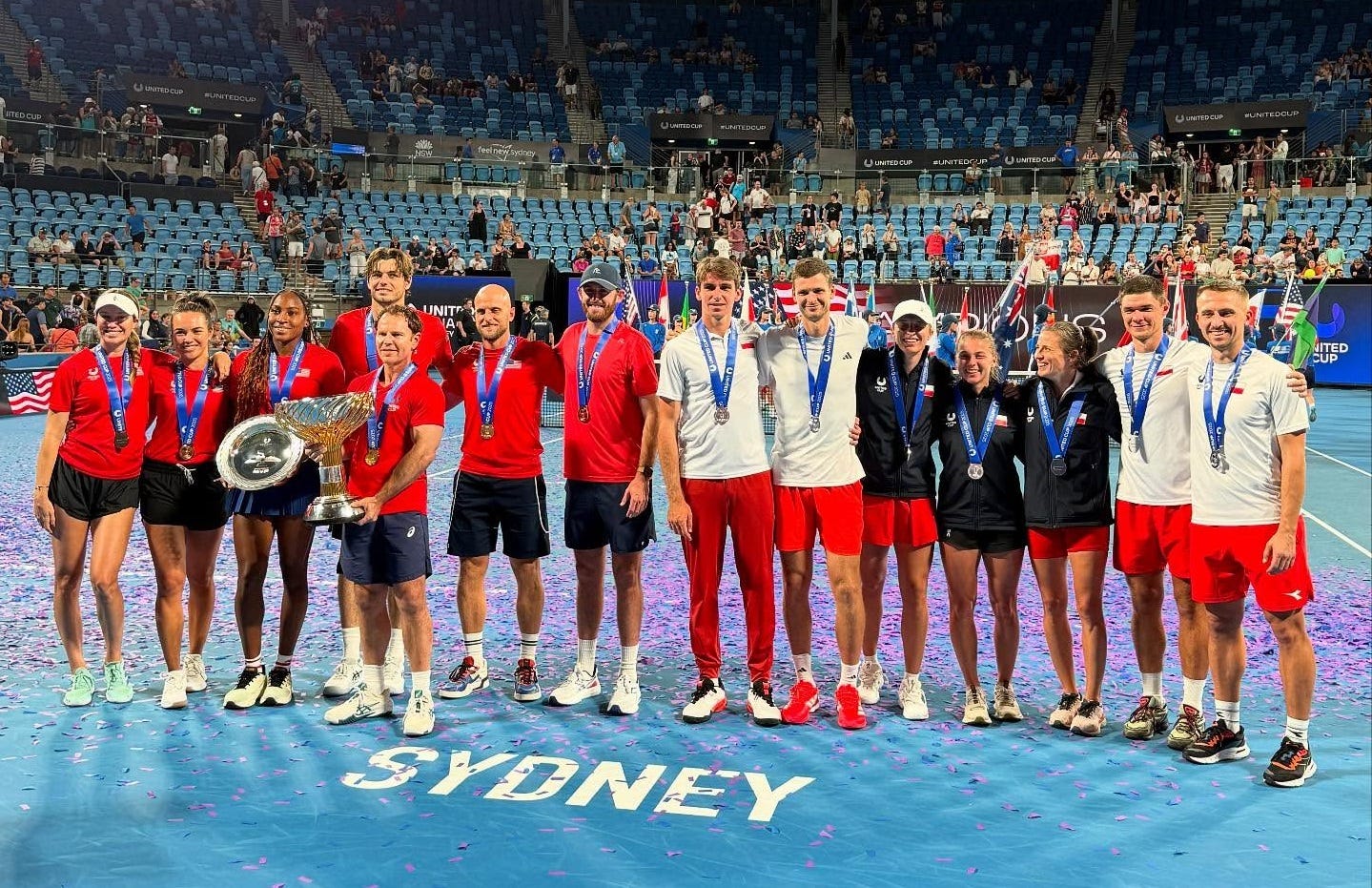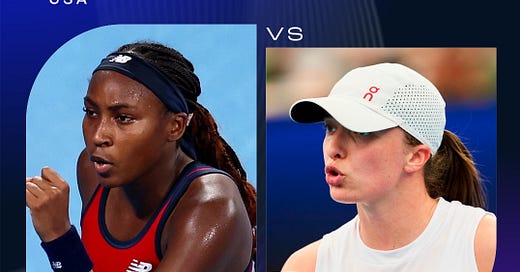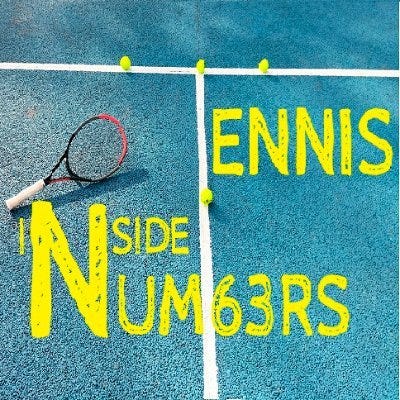United Cup: Coco Gauff vs Iga Swiatek final analysis
Gauff's forehand adjustments and the metrics that changed with them
The first week of the new season was a treat! At the end of it, after so many great matches, we were offered tennis of the highest intensity as Coco Gauff and Iga Swiatek, probably the two best movers in the game, sprinted and slid all over the court to retrieve shots left and right, in an all-out effort to give their country the lead in the United Cup final.

Despite the lopsided head-to-head entering the match — Swiatek led 11-2 — a straight-sets win in their last meeting in Riyadh two months ago and recent adjustments made under coach Matt Daly gave Gauff the belief she was now equipped to withstand and counter Swiatek’s expected gameplan.
Indeed, Swiatek looked to rush the forehand with her serve and topspin shots, as she has usually done against Gauff. This time however, the American remained calm, was keen on engaging in forehand duels and handled Swiatek’s shots very well. Ultimately, Gauff achieved a statement 6-4, 6-4 win built on:
massive superiority from the back of the court
huge advantage in medium rallies (5 to 8 shots)
outstanding consistency from the backhand wing
the ability to match Swiatek’s offensive production from the forehand wing while accumulating fewer errors
These key factors were made possible by Gauff’s incredible athleticism and rounded out by a controlled number of double faults.
You can finally call it a rivalry, even if Swiatek still holds a substantial 11-3 lead in the matchup!
Before addressing all the difference-making numbers, it is inevitable to dive into Gauff’s forehand adjustments.
Going back a few months, amid calls for changes to Gauff’s forehand grip/technique, her former coach Brad Gilbert considered that would likely require some prolonged time away from the Tour. The best short-term option was to focus on limiting forehand errors and converting matches into physical battles, where Gauff would eventually gas out her opponents by virtue of some of her best assets — movement and athleticism.
But Gauff wanted more and was confident on making fast improvements. So she added Matt Daly, a specialist on footwork and grip technique, to longtime coach Jean-Christophe Faurel and put on the work.
A few months into their collaboration, changes on the forehand are noticeable and already paying off. These are the main differences we identified:
a more compact backswing
adjusted grip that has the racquet coming for the ball in a slightly more opened angle
the ability to maintain racquet head acceleration even on low balls or when forced wide
better balance with less falling to the side, providing the foundations for a straighter, more direct and extended follow-through
increased aggression on 2nd serve returns
Feeling confident, Gauff is now leaning way more into most forehands she hits, which in turn results in better depth and higher pace of shot.
→ Several of the above listed traits were on display during Gauff’s first 2 converted break points of the match, as she ripped some big forehands
📺 source: Tennis Tv
A significant drift from the past was how Gauff was happy and determined to apply pressure by blasting forehand returns (one example below).
This was a stark contrast to Gauff’s returning attitude and confidence in Rome last May, where she favoured “run-around”-type backhand returns over forehand returns.
→ As Swiatek is about to contact the ball on the serve, Gauff is already leaning towards the middle (images on the left side). Even though the trajectory of both serves was ideal for a forehand return, Gauff ends up striking a couple of “run-around”-type backhand returns (right side).
Another feature of Gauff’s improved forehand was her ability to keep the pace up even when hitting low, dropping balls.
[To keep reading this analysis, please consider becoming a paid subscriber! Below this line we continue to discuss Gauff’s forehand, present the difference-making numbers, identify some of the positives for Swiatek and share extensive match data. Don’t miss it!]






